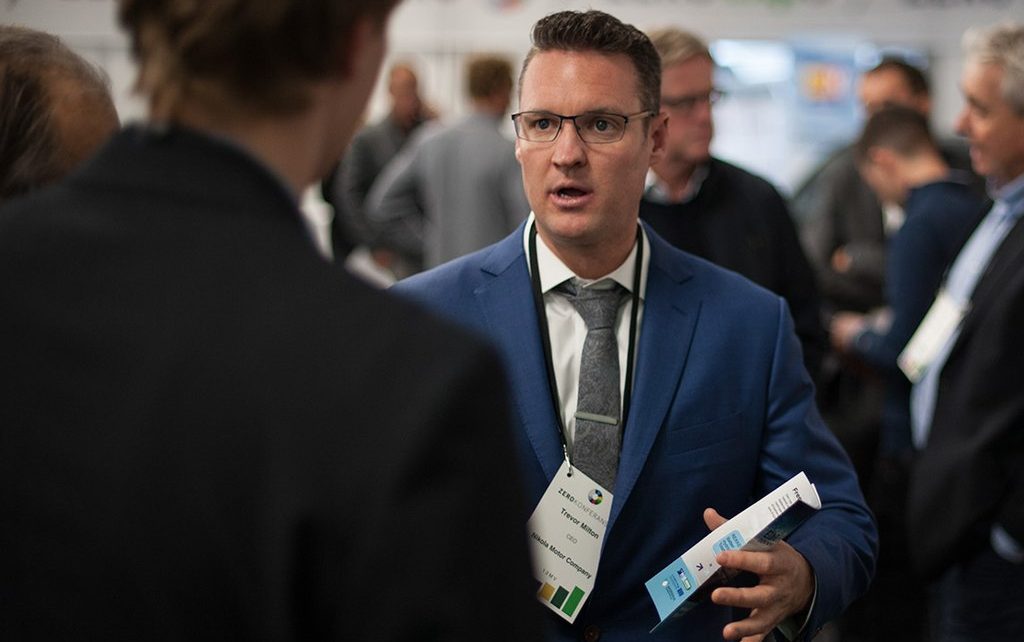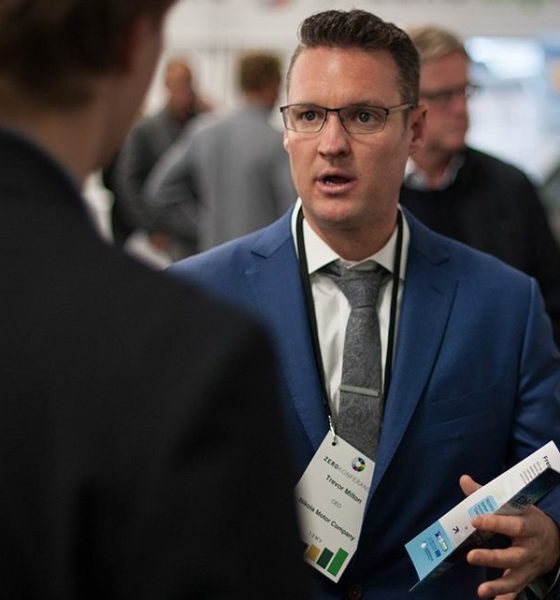

News
Former Nikola CEO Trevor Milton defends his Board nominees
Former Nikola CEO Trevor Milton is fighting back against the Board of Directors’ decision to reject his five director nominees. The Nikola Board announced its rejection of Milton’s director nominees earlier this month.
Milton had nominated Cole Cannon, Derek Johnson, Hans Peterson, Paul Southam, and Dave Sparks, who runs the HeavyD YouTube channel, for Nikola’s Board of Directors. The current Nikola Board cited several reasons behind its rejection of Milton’s nominees, from their alleged lack of experience in a public company to a lack of skills.
“The director nominees have no public company experience, add no skills or experience to the board, and indisputably lack the depth of experience that the current Nikola board members bring to the Company. Additionally, it is the Company’s belief that the director nominees lack the expertise or knowledge needed to navigate the complexities of a zero-emissions trucking and energy infrastructure business,” Nikola’s current Board wrote in a press release.
In a press release, M&M Residual, LLC, an entity connected to Milton, together with its affiliates, argued that the former CEO’s director nominees should be considered. As per the shareholder group, which owns about 4.5% of Nikola stock, Milton’s selections should help the company fix its issues and put it back on a path to value creation. The group argued that Nikola’s leadership today has shown subpar performance, with the company’s stock nearly getting wiped out.
“Since taking over as Chair in 2020, CEO Steve Girsky and his Board have overseen a staggering and consistent decline in Nikola’s stock from $30+ per share to a delisting Nasdaq price of less than seventy cents per share… For approximately four years now, the Board has overseen operational underperformance, value destructive acquisitions, the breakdown of the Iveco Group-Nikola partnership, the loss of meaningful European market share and the sale of key assets while taking on debt. These actions (among other concerning missteps surrounding safety and disclosures) have resulted in the destruction of nearly 100% of stockholder value.
“Concerningly, the Board also diluted Nikola shares to the tune of an additional 800 million last year, so that over 1.6 billion total shares are now authorized with over 1 billion shares in circulation. After destroying significant value and diluting stockholders as Chair, Steve Girsky then took the helm as CEO in August 2023. Under Mr. Girsky’s leadership, stockholders suffered an approximate 72% decline in value. No matter how you look at it, over all relevant time periods this management team and Board have obliterated stockholder value and put our Company at risk,” the stockholder group noted.
The group claimed that it had been approached by numerous stockholders who wish to see the current leadership of Nikola replaced. M&M Residual, LLC and its affiliates’ press release also noted that Milton’s five picks for Nikola’s director post have already started working on an operational strategy that would improve the company.
“Our Group has been approached by numerous stockholders who want to see CEO Steve Girsky and his Board replaced with high-integrity individuals. This is a reasonable request, especially considering Nikola recently disclosed that substantial doubt exists regarding its ability to continue as a going concern through the next 12 months… In stark contrast to the current Board, our independent slate includes proven founders and executives who collectively possess the operational, supply chain, and electric vehicle experience that we believe will be required to initiate a value-enhancing turnaround at Nikola. Our five-member slate has already begun working on an operating strategy that considers the interests of stockholders, employees, partners, and customers,” the shareholder group noted.
Don’t hesitate to contact us with news tips. Just send a message to simon@teslarati.com to give us a heads up.

News
Tesla FSD fleet is nearing 7 billion total miles, including 2.5 billion city miles
As can be seen on Tesla’s official FSD webpage, vehicles equipped with the system have now navigated over 6.99 billion miles.

Tesla’s Full Self-Driving (Supervised) fleet is closing in on almost 7 billion total miles driven, as per data posted by the company on its official FSD webpage.
These figures hint at the massive scale of data fueling Tesla’s rapid FSD improvements, which have been quite notable as of late.
FSD mileage milestones
As can be seen on Tesla’s official FSD webpage, vehicles equipped with the system have now navigated over 6.99 billion miles. Tesla owner and avid FSD tester Whole Mars Catalog also shared a screenshot indicating that from the nearly 7 billion miles traveled by the FSD fleet, more than 2.5 billion miles were driven inside cities.
City miles are particularly valuable for complex urban scenarios like unprotected turns, pedestrian interactions, and traffic lights. This is also the difference-maker for FSD, as only complex solutions, such as Waymo’s self-driving taxis, operate similarly on inner-city streets. And even then, incidents such as the San Francisco blackouts have proven challenging for sensor-rich vehicles like Waymos.
Tesla’s data edge
Tesla has a number of advantages in the autonomous vehicle sector, one of which is the size of its fleet and the number of vehicles training FSD on real-world roads. Tesla’s nearly 7 billion FSD miles then allow the company to roll out updates that make its vehicles behave like they are being driven by experienced drivers, even if they are operating on their own.
So notable are Tesla’s improvements to FSD that NVIDIA Director of Robotics Jim Fan, after experiencing FSD v14, noted that the system is the first AI that passes what he described as a “Physical Turing Test.”
“Despite knowing exactly how robot learning works, I still find it magical watching the steering wheel turn by itself. First it feels surreal, next it becomes routine. Then, like the smartphone, taking it away actively hurts. This is how humanity gets rewired and glued to god-like technologies,” Fan wrote in a post on X.
News
Tesla starts showing how FSD will change lives in Europe
Local officials tested the system on narrow country roads and were impressed by FSD’s smooth, human-like driving, with some calling the service a game-changer for everyday life in areas that are far from urban centers.

Tesla has launched Europe’s first public shuttle service using Full Self-Driving (Supervised) in the rural Eifelkreis Bitburg-Prüm region of Germany, demonstrating how the technology can restore independence and mobility for people who struggle with limited transport options.
Local officials tested the system on narrow country roads and were impressed by FSD’s smooth, human-like driving, with some calling the service a game-changer for everyday life in areas that are far from urban centers.
Officials see real impact on rural residents
Arzfeld Mayor Johannes Kuhl and District Administrator Andreas Kruppert personally tested the Tesla shuttle service. This allowed them to see just how well FSD navigated winding lanes and rural roads confidently. Kruppert said, “Autonomous driving sounds like science fiction to many, but we simply see here that it works totally well in rural regions too.” Kuhl, for his part, also noted that FSD “feels like a very experienced driver.”
The pilot complements the area’s “Citizen Bus” program, which provides on-demand rides for elderly residents who can no longer drive themselves. Tesla Europe shared a video of a demonstration of the service, highlighting how FSD gives people their freedom back, even in places where public transport is not as prevalent.
What the Ministry for Economic Affairs and Transport says
Rhineland-Palatinate’s Minister Daniela Schmitt supported the project, praising the collaboration that made this “first of its kind in Europe” possible. As per the ministry, the rural rollout for the service shows FSD’s potential beyond major cities, and it delivers tangible benefits like grocery runs, doctor visits, and social connections for isolated residents.
“Reliable and flexible mobility is especially vital in rural areas. With the launch of a shuttle service using self-driving vehicles (FSD supervised) by Tesla in the Eifelkreis Bitburg-Prüm, an innovative pilot project is now getting underway that complements local community bus services. It is the first project of its kind in Europe.
“The result is a real gain for rural mobility: greater accessibility, more flexibility and tangible benefits for everyday life. A strong signal for innovation, cooperation and future-oriented mobility beyond urban centers,” the ministry wrote in a LinkedIn post.
News
Tesla China quietly posts Robotaxi-related job listing
Tesla China is currently seeking a Low Voltage Electrical Engineer to work on circuit board design for the company’s autonomous vehicles.

Tesla has posted a new job listing in Shanghai explicitly tied to its Robotaxi program, fueling speculation that the company is preparing to launch its dedicated autonomous ride-hailing service in China.
As noted in the listing, Tesla China is currently seeking a Low Voltage Electrical Engineer to work on circuit board design for the company’s autonomous vehicles.
Robotaxi-specific role
The listing, which was shared on social media platform X by industry watcher @tslaming, suggested that Tesla China is looking to fill the role urgently. The job listing itself specifically mentions that the person hired for the role will be working on the Low Voltage Hardware team, which would design the circuit boards that would serve as the nervous system of the Robotaxi.
Key tasks for the role, as indicated in the job listing, include collaboration with PCB layout, firmware, mechanical, program management, and validation teams, among other responsibilities. The role is based in Shanghai.
China Robotaxi launch
China represents a massive potential market for robotaxis, with its dense urban centers and supportive policies in select cities. Tesla has limited permission to roll out FSD in the country, though despite this, its vehicles have been hailed as among the best in the market when it comes to autonomous features. So far, at least, it appears that China supports Tesla’s FSD and Robotaxi rollout.
This was hinted at in November, when Tesla brought the Cybercab to the 8th China International Import Expo (CIIE) in Shanghai, marking the first time that the autonomous two-seater was brought to the Asia-Pacific region. The vehicle, despite not having a release date in China, received a significant amount of interest among the event’s attendees.








